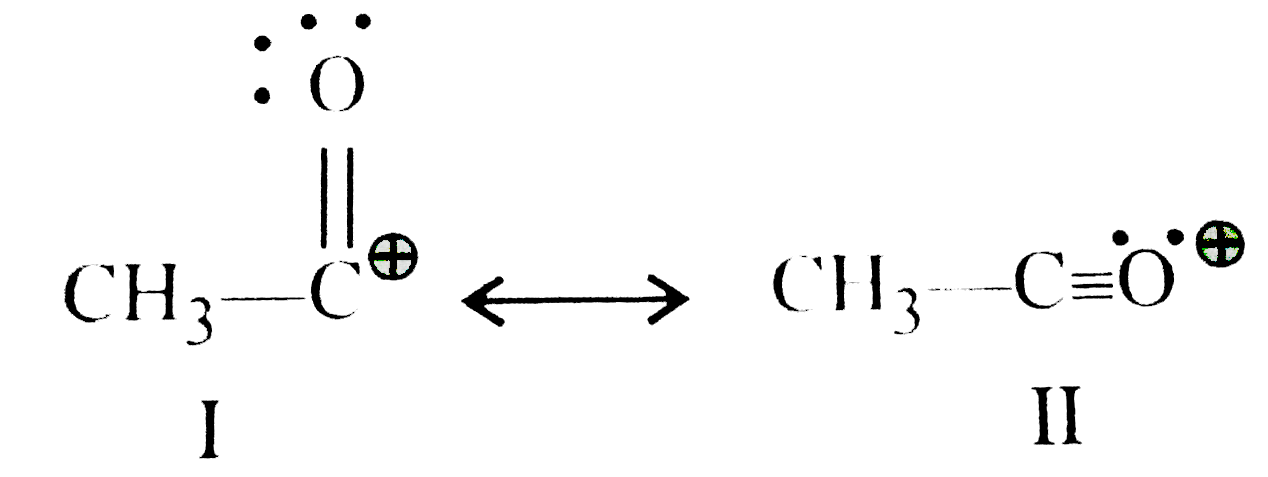Which of the following statement is correct ?
+ l group stabilises a carbocation
+ l group stabilises a carbanion
+ l group destabilises a carbocation
+ l group stabilises a free radical
The correct Answer is:A
To solve the question regarding which statement about the +I group is correct, we need to analyze the effects of the +I (positive inductive) group on carbocations, carbanions, and free radicals.
1. Understanding +I Effect:
- The +I effect refers to the electron-donating ability of certain groups (like alkyl groups) through the sigma bonds. These groups push electron density towards the positively charged carbon (carbocation) and can affect the stability of different species.
2. Analyzing Carbocation Stability:
- Carbocations are electron-deficient species. The presence of +I groups increases the electron density around the positively charged carbon, thus stabilizing the carbocation.
- Conclusion: +I groups stabilize carbocations.
3. Analyzing Carbanion Stability:
- Carbanions are negatively charged species. The presence of +I groups, which donate electrons, can destabilize carbanions because they already have excess electron density.
- Conclusion: +I groups destabilize carbanions.
4. Analyzing Free Radical Stability:
- Free radicals have an unpaired electron. The stability of free radicals is influenced by the ability of neighboring groups to donate electron density to stabilize the unpaired electron. However, the +I effect does not directly stabilize free radicals as it does with carbocations.
- Conclusion: The +I effect does not significantly stabilize free radicals.
5. Final Evaluation of Statements:
- Based on the analysis:
- Statement A: +I group stabilizes carbocation (Correct)
- Statement B: +I group stabilizes carbanion (Incorrect)
- Statement C: +I group destabilizes carbanion (Correct)
- Statement D: +I group stabilizes free radicals (Incorrect)
6. Correct Answer:
- The correct statement is that the +I group stabilizes carbocation.
- The +I effect refers to the electron-donating ability of certain groups (like alkyl groups) through the sigma bonds. These groups push electron density towards the positively charged carbon (carbocation) and can affect the stability of different species.
- Carbocations are electron-deficient species. The presence of +I groups increases the electron density around the positively charged carbon, thus stabilizing the carbocation.
- Conclusion: +I groups stabilize carbocations.
- Carbanions are negatively charged species. The presence of +I groups, which donate electrons, can destabilize carbanions because they already have excess electron density.
- Conclusion: +I groups destabilize carbanions.
- Free radicals have an unpaired electron. The stability of free radicals is influenced by the ability of neighboring groups to donate electron density to stabilize the unpaired electron. However, the +I effect does not directly stabilize free radicals as it does with carbocations.
- Conclusion: The +I effect does not significantly stabilize free radicals.
- Based on the analysis:
- Statement A: +I group stabilizes carbocation (Correct)
- Statement B: +I group stabilizes carbanion (Incorrect)
- Statement C: +I group destabilizes carbanion (Correct)
- Statement D: +I group stabilizes free radicals (Incorrect)
- The correct statement is that the +I group stabilizes carbocation.
Topper's Solved these Questions
Similar Questions
Knowledge Check
Which of the following statements is correct?
 ADipole moment :
ADipole moment :
 BStability of free radical :
BStability of free radical :
 CBasic strength : CH3OӨ>ӨOH>RSӨDBasic and nucleophilic strength : IӨ>BrӨ>C1Ө>FӨ
CBasic strength : CH3OӨ>ӨOH>RSӨDBasic and nucleophilic strength : IӨ>BrӨ>C1Ө>FӨWhich of the following statements is correct?
ALava and magma both have gasBNeither the lava nor the magma has gasCMagma has gas while lava has no gasDLava has gas while magma has no gasWhich of the following statements is correct?
Aa) Parthenium is an endemic species of our country.Bb) African catfish is not a threat to indigenous catfishesCc) Steller's sea cow is an extinct animal.Dd) Lantana is popularly known as carrot grass.
